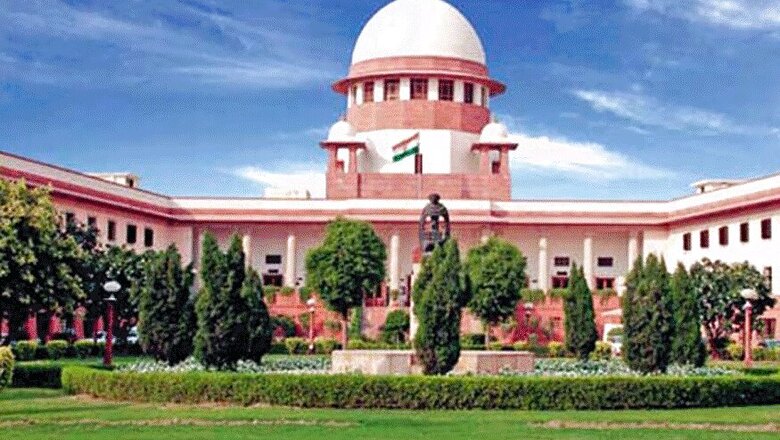
views
New Delhi: Supreme Court of India on Friday ordered Karnataka to hold a floor test on Saturday to ascertain whether newly appointed BJP Chief Minister B S Yeddyurappa enjoys a majority in the state.
A three-judge bench of the Supreme Court was hearing a petition filed by the Congress-JD(S) combine in Karnataka against the decision of Governor Vajubhai Vala to invite BJP’s BS Yeddyurappa to form the government.
Taking a cue from the Karnataka, opposition parties had earlier demanded that the Governors of four other states — Goa, Bihar, Meghalaya and Manipur — should invite them to stake claim to the government as they were the single-largest parties in last Assembly polls held in these states.
A look at the elections in last three years shows that single largest parties in the states haven’t always ended up forming the government.
Manipur
In the March 2017 Assembly elections in Manipur, the BJP, with 21 seats, came second to the then ruling Congress, which bagged 28 seats– three short of the majority mark to form a government.
In spite of coming second in the electoral race, the BJP formed a government with support from its regional allies, the Naga People’s Front (NPF) and the National People’s Party (NPP). However, together with NPF and NPP’s four seats each, and with support from the lone independent MLA Ashab Uddin, the BJP could only reach 30, which was one short of the majority mark in the 60-member Assembly.
To get one more MLA to support a BJP government, the party poached a Congress MLA, Thounaojam Shyamkumar Singh. Without even resigning from the party, Shyamkumar was seen accompanying the BJP MLAs to Raj Bhavan to stake claim to form the government.
Later on, Governor Najma Heptulla invited the party to form the government, ignoring the claim of the Congress.
However, eight other Congress MLAs have shifted their allegiance to the BJP since the government formation. All of them have gone with BJP without resigning from their constituencies, which they had won on Congress tickets.
As a result, BJP’s tally has risen from 21 to 30, reducing the Congress’s strength from 28 to 19. The BJP also cobbled up the lone independent MLA as well as Trinamool Congress MLA, Tongbram Robindro Singh, by its side, touching the majority figure of 31 on its own.
However, Congress can still claim to be the single largest party in the state because its MLAs, which shifted allegiance to the BJP, have not yet officially resigned from the party.
Goa
Similar scenes were witnessed in Goa Assembly elections last year as well.
In Goa's Assembly election, Congress was the single-largest party with 21 seats in the 40-seat House; however, it was the BJP through a post-poll alliance that ended up forming the government.
In the Assembly elections held in March last year, the Congress bagged 17 seats in the 40-member House, falling short of the majority figure by four seats. One of the Congress MLA later resigned and joined the BJP.
The BJP, which got 14 seats, formed the government in alliance with Goa Forward Party and MGP, both of which had secured three seats each. Three Independents also went with the BJP.
Meghalaya
In Meghalaya, the BJP, with just two seats, outmanoeuvred the Congress in cobbling up numbers to form a coalition government.
BJP also played a pivotal role in stitching up a mega alliance and secure the support of 34 legislators to form the government. The Congress, the single largest party in the state with 21 legislators, was left high and dry despite rushing four senior leaders — Ahmed Patel, Kamal Nath, Mukul Wasnik and CP Joshi — to Shillong to reach out to the possible allies and avoid a repeat of Goa and Manipur.
Currently, the ruling alliance in the state is headed by the National People’s Party with 19 seats, and comprises the United Democratic Party with 6 seats, People’s Democratic Front with 4 seats, Hill State People’s Democratic Party with 2 seats and one Independent.
Bihar
In Bihar, Nitish Kumar's JD(U) and Lalu Prasad's RJD had joined hands, along with the Congress, to form a grand alliance to fight the Bihar Assembly elections. The combine had defeated the BJP emphatically. However, the JD(U), which had snapped ties with the BJP in July 2013, returned to the NDA fold in July 2017, after cutting ties with the RJD.
RJD had emerged as a single largest party with 80 seats in 2015 Assembly elections while JD (U) was second with 71 seats and Congress Party 27 seats. The BJP had won 53 seats.
The alliance, however, did not last long as Chief Minister Nitish Kumar dumped the grand secular alliance and formed a government with the BJP in July 2017 on grounds that his Deputy Chief Minister Tejashwi Yadav’s name had figured in the FIR registered by CBI in connection with the Benami land deals.




















Comments
0 comment